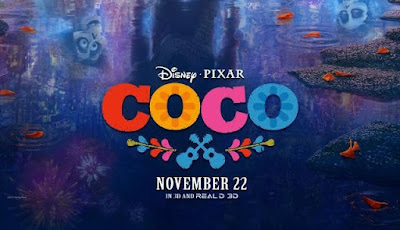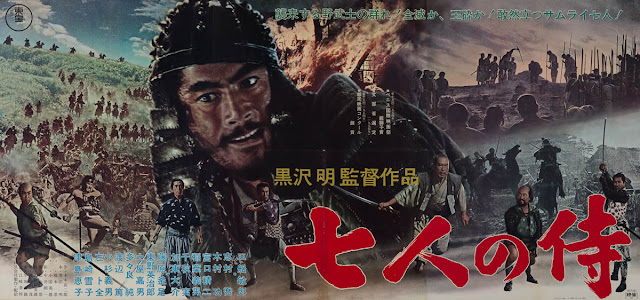Coco (Dir Lee Unkrich, 1h 39 m)
Coco, at heart, is a family film. Not just a film to be seen with a family (although I will admit that when I saw it, I was one of the few people in the screening without a family in tow), but also a film about family, both living and, through memory, those who have passed on. Telling the story of Migeul, an aspiring musician from a family that has banned music due to the mysterious disappearance of an ancestor, and his quest to get home after being trapped in the World of the Dead on Mexico's annual Dia de la Muerta, Coco is a fiesta for eyes and ears.
This theme of family is utterly central to the film-whilst the film begins in the world of the living, it's the World of the Dead, a dazzling polychromatic, bright, and clearly Mexican cityscape that spreads in all directions-including up-that the audience, and Miguel, begin to realise quite how important family is. It's worth saying that, despite the crew being American, the entire cast are Mexican, and the film, both in terms of its music and visuals, down to the finest detail is overtly, proudly, but never stereotypically Mexican. In the face of certain elements of America actively attacking the Mexican people, this film is a brave, and beautiful retort.
Beginning with a potted backstory of Miguel Rivera's extensive family, the disappearance of the family's patriach, and the family's banning of music and movement to shoe-making-all told in beautiful limited animation upon banners, the story shifts to the Dia de La Muerta itself, and, when Miguel's passion for music-and his beloved hand-made guitar-is found and destroyed, Miguel turns to another source, the tomb of renowned musician Ernesto de la Cruz, with whom he seems to share a bond.
Taking la Cruz's guitar, Miguel finds himself invisible to the living, and, after running from some of the visiting dead, Miguel comes face-to-face with his skeletal ancestors, and after crossing a bridge constructed entirely of the recurring Aztec Marigolds, travels into the visually stunning, and surprisingly bureaucratic, World of the Dead, to meet more ancestors, including fearsome matriach Imelda , who are clearly worried about getting him home. When Miguel's continual yearnings to be a musician end him back up in the World of the Dead, to the ire of his family on both sides of the bridge, he turns to an unlikely and shambling figure, in the shape of Hector.
Hector, played by Gael García Bernal, is a perfect foil to Miguel-street-smart, cynical, and, it's soon revealled, a fellow musician-through their travels through the World of the Dead, first to one of the dead to borrow a guitar, then to the studio of, in a bizarre cameo, iconic Mexican artist Frida Kahlo, before heading to a talent contest where, despite some initial nerves from Miguel, the two bond over a perfomance of one of Cruz's songs, and over the rest of the film, through revelations and unexpected twists, come to realise that there may be more to their friendship than a shared goal.
Coco's key theme of family is thus explored in multiple ways-firstly, in the way that family seems to hold one back, to stop one from fulfilling their dreams-whilst this is rather simplistically regarded by both Miguel and de la Cruz as a necessary part of the process of being a musician, to "seize your moment", there is a sense that, in the end, this leaves someone transient and rootless, drifting, as de la Cruz's career eventually proves. Thene there is the Rivera familyand its traditions-whilst the family, both living and passed on, are keen to help Miguel get a good job in the family business and to get home, respectively, their dotage ends with Miguel's dream of being a musician, Imelda making part of his first, unsucessful, return conditional on him never playing music again.
Connected to this concept of family is the idea of memory-early on, the mechanics of the ability of the dead to travel to the human world depends on their picture being displayed on the family ofrenda, (or offering) and when they are forgotten in the human world, they vanish from the world of the dead-thus, memory is crucial, and in one of the film's key scenes, and one that may stand among the great moments that Pixar have created thus far, memory and music come together, with nigh-perfect visuals and a superb sense of timing. With it, Miguel and his family begin to move on from their dislike of music, and begin to embrace it, and the past that was hidden celebrated.
Coco is thus not only a beautiful film, but one that focuses on that key element of family, compromise-Miguel's family eventually has to learn to accept his talent as a musician, and Miguel to accept his family-this it does with a rare quality, in its writing, its music and its animation-it is a film that any family, big or small, need to see.
Rating: Highly Recommended

.jpg)

Comments
Post a Comment